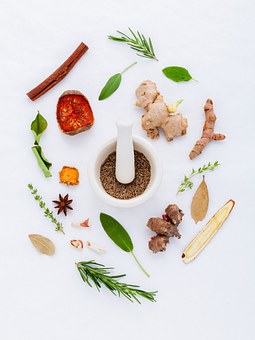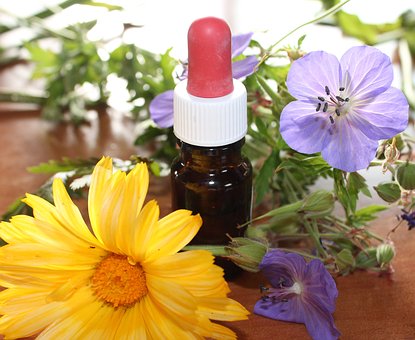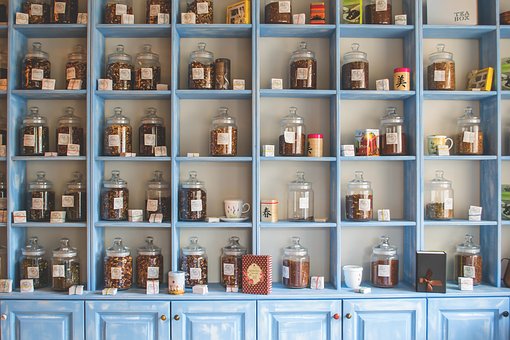Scrophularia nodosa
In both eastern and western traditions, figwort (S. nodosa) is a very cleansing herb. In the past, figwort was known as the scrofula plant (hence the botanical name), and used to treat abscesses, purulent wounds, and the “King’s Evil” or scrofula (tuberculosis of the lymph glands in the neck). Culpeper calls the herb throatwort because of its use in treating this disease. The Chinese use xuan shen, the root of a related species, S. ningpoensis, as a prime remedy for “fire poisons,” the kind of purulent conditions associated with the herb in the West.
Tag: herb
Cicely
Myrrhis odorata
The plant called the sweet cicely is a hardy and robust herb. The cicely is an aromatic perennial herb indigenous to the mountainous areas of Europe and Asian Russia – growing originally only in these regions. The cicely when fully mature can reach 0.6 to 0.9 m or 2 to 3 feet in height. Sweet cicely is one of the first herbs that come up when spring arrives; the sweet cicely is a pretty plant and makes a beautiful backdrop to a perennial border in mountainous regions where it grows.
Chinese Angelica
Angelica sinensis syn. A. polymorpha
The herbal product made from the Chinese angelica, also commonly called the dong quai, the dang gui, or the tang kuei is derived from the root of the Chinese herb – the Angelica polymorpha Maxim – botanical name. The variety of the species is sinensis Oliv. The herb is also known as A. sinensis (Oliv.), and it is a member of the plant family Apiaceae common in and native to China. The herbal remedies and herbal medication prepared from this herb has a mildly laxative effect on people, while, it is used primarily as a uterine tonic in women, it is also used as an antispasmodic herbal agent, and it is also used for its alterative-or blood purifying-effects, which are said to be very beneficial to affected patients.
What is Copal?
Scientific and medicinal info
Copal is actually a resin, not an herb. Resins are solidified pieces of plant sap, and they are very fragrant when burned. Copal comes from various species of the Bursera tree, in Mexico and South America. There are 3 varities of copal: white, gold and black. Each has its own subtle differences in scent.
Continue reading “What is Copal?”
Coriander (Cilantro) –
I love this herb! I grew up calling it cilantro but it is known as coriander in the U.K. Having made my own salsa from fresh ingredients, I will never again eat the stuff from a jar. And the pungent taste of the fresh chopped cilantro leaves is the main reason. It’s also delicious in a number of sauces and Chinese dishes. The seeds are a staple in most herb cabinets although I’ve never really cooked with them. To be honest, this is not an easy plant to grow. Or maybe I just have bad luck with them. All the books say keep the plants in full sun in well-drained soil.
Bupleurum
Bupleurum chinense syn. B. scorzoneraefolium
The plant commonly called by names such as the Chinese thorough wax or the bupleurum is an herb native to parts of East Asia. The bupleurum is a perennial herb, which tends to grow in wild profuse patches along the sunny sides of sedge thickets in many areas of East Asia. The herb is characterized by the presence of many broad linear to lanceolate shaped leaves arranged in an alternative array along the stem. The shape of the leaves are peculiar, with acuminate shape apexes having a gradually tapering base, morphologically the leaves are also characterized by having parallel running veins which run seven to nine inches thick and the leaf margins are intact without any peculiar edges.
Boneset
Eupatorium perfoliatum
Names of plants often reveal much information about them. They can also be misleading. There is little difficulty with the scientific name of boneset, Eupatorium perfoliatum L. The genus name of this member of the daisy family (Asteraceae) derives from Mithridates Eupator, ancient king of Pontus, who first used a closely related plant for medicinal purposes. The species designation, perfoliatum, refers to the manner in which the erect hairy stem of the hardy perennial herb, which attains a height of about five feet and is crowned with heads of white tubular florets, appears to perforate the center of the pairs of oppositely joined leaves. Boneset, the common name, is more likely to lead one astray since the plant was classically employed in the treatment of fevers, not to mend broken bones.
Black Cohosh
MEDICINAL: Black Cohosh is useful in all conditions dealing with arthritis. It improves blood circulation, and is used in treating delayed and painful menstruation, and is often used in conjunction with other herbs in treating menopause symptoms. It should not be used during pregnancy. Black Cohosh can be poisonous in large doses. It contains a chemical much like estrogen, so those advised by their doctor’s not to take the Pill should avoid using this herb.
Herbal Treatments For Dogs
The immune system
Astragalus root, Astragalus membranaceus, a popular plant in Chinese medicine, is considered an immuno-stimulant herb. It is said to stimulate the development of cells in the immune system. The purple coneflower, Echinacea purpurea, one of the most popular of all herbs, is said to stimulate macrophages, especially in their action against yeast cells. According to research, both berberis and aloe vera stimulate an immune response.
Chemistry Of Herbs
Herbs are holistic agents as they work on many levels of the human being; and even on the physical level-on the level of biochemistry-their actions are complex and synergistic. Despite the complexity, pharmacologists have undertaken a lot of research to find out what the constituents are, and have classified these constituents according to their chemical groups. Even though this analytical approach to herbs is inherently limiting, it has produced a great deal of valuable information about some of the biochemical processes taking place. A knowledge of herb pharmacology is not essential to a herbalist, but is a great help in understanding the herb.





